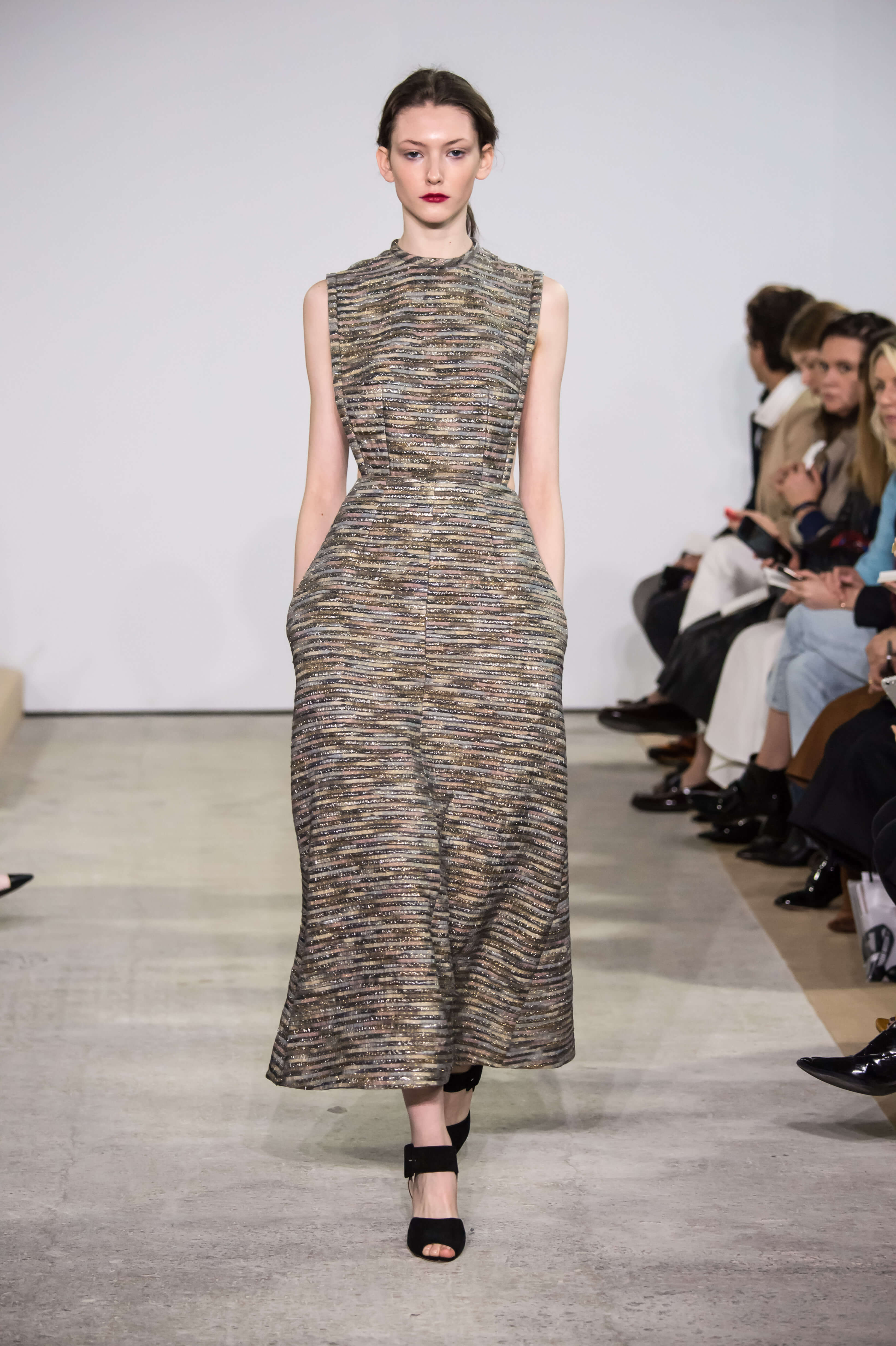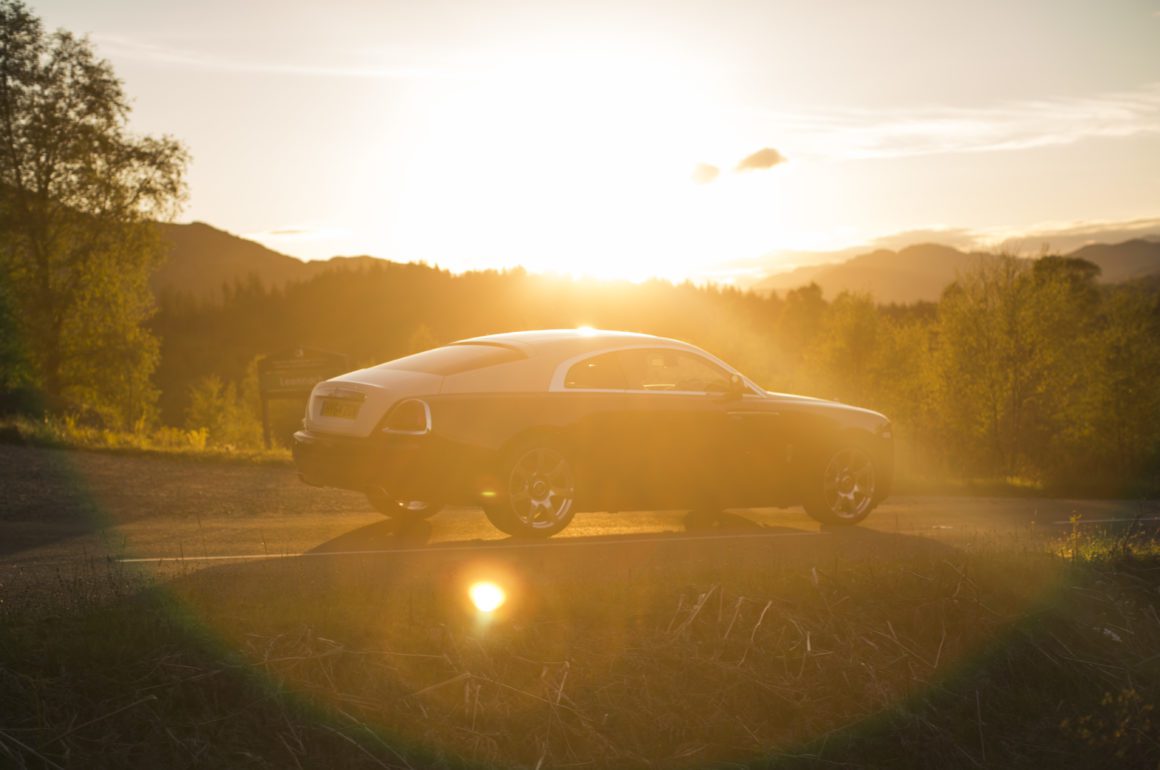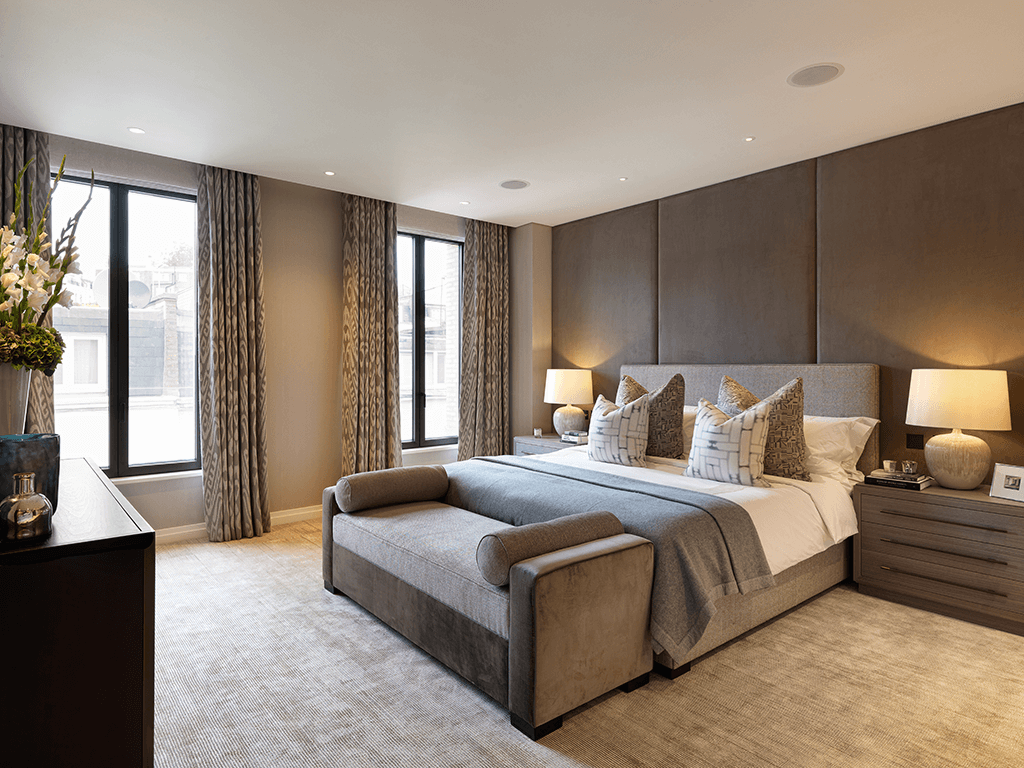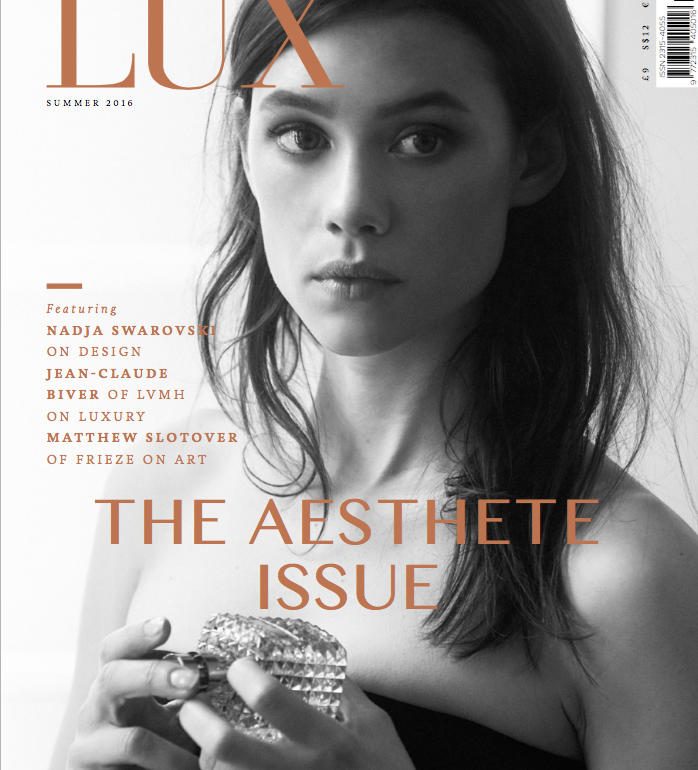
Emilia Wickstead SS16 Collection, backstage at London Fashion Week
Emilia Wickstead’s designs are attracting the attention of Hollywood royalty (and even the real thing) for their mix of the classic and the modern. LUX discovers what inspires her
Emilia Wickstead is hot, hot, hot. The 31-year-old, London-based fashion designer has become one of the biggest draws of London Fashion Week in the four years since she started showing. Her grown-up, dressy, classical yet contemporary style has attracted the likes of the Duchess of Cambridge (Kate Middleton), Gwyneth Paltrow and Diane Kruger; and the architectural cut and quality of her garments has earned the praise of fashion directors and drawn the attention of the industry’s big guns.
What’s the secret of the New Zealand- born designer’s success? Is it her clever references to the 1950s Modernist design movement (not just Dior and Chanel, but the whole of design), creating pieces which look like they have been inspired by an architect’s pen? Her philosophy, which she describes as “classic with a twist”? Her smiling, outgoing, gregarious yet steely personality? Or her sheer hard work – the mother of two small children is known for her 18-hour days?
Read next: Vilebrequin’s CEO on the importance of heritage
Alexandra Shulman, Editor-in-Chief of British Vogue, comments: “Emilia has a very strong vision for her label. She has a clear idea of the woman she is designing for and she is also an excellent brand ambassador.”
Wickstead also has influential followers among the people she counts among her customers. Says Narmina Marandi, a friend, supporter and confidante of Wickstead: “Emilia is a rare person in fashion, a brilliant designer with a strong view on how the modern woman should dress up. She’s also fantastic company, with a great sense of humour, charm, and a very powerful philosophy and determination underneath.” These are views you will find echoed among her friends and admirers around the world.
LUX sat down with Wickstead in a room with bare-brick walls, dark varnished wood floors, and four racks of her next season’s collection, in muted yet joyous colours we promised not to identify, to find out more.
LUX: Is fashion is in your genes?
Emilia Wickstead: My mother [Angela Wickstead] started studying fashion when I was born, and then began her business from home when I was a little girl. It was just my mother and I. Designing was instilled in me from a very young age. I didn’t know anything else. Her business went through different moments and growth then. She worked from home and went from designing and selling through word of mouth (similar to how we started our business) on to building her retail model.
LUX: Do you have childhood memories of taking bits of fabric and creating pieces?
EW: Absolutely! There are many memories of being in her workroom all the time – weekends, after school. I would sit in on her fittings, I still laugh about it with some of her existing clients who she still has today. Without even realising, I would just sit, watch and observe, and take in everything: fashion weeks, late nights… It was just the two of us. Her workroom and her store – that was where I had my upbringing. I didn’t go home after school, I went to her work to do my homework and just be there until we went home, which sometimes could be quite late at night.
-

-
Wickstead designs for the confident, feminine,fashion-forward woman
-

-

LUX: What do you think you picked up?
EW: I learned from my mother that it was all about the cut and fit and the quality of fabric. The theory that the quality on the inside should be the same as on the quality of the outside of the garment. Those are things you don’t necessarily learn at university, as there is so much focus on design, experimentation and building your philosophy of who you are as a designer. So I do think I learned from her the majority of what I know in terms of those very important factors, without which you couldn’t have a successful line of business.
Read next: Art is the greatest legacy, says renowned auctioneer Simon de Pury
LUX: The architectural cut is something you’re renowned for. Do you think that’s something all designers should pay attention to?
EW: I think that it’s something that’s very ‘old world’. It depends on who they are as a designer, their aesthetic and what their business model is. I always believe that, for me and my business, what I would hope for in years to come is that people will pull out an Emilia Wickstead piece as though it is a Chanel suit. You will still wear that Chanel suit because (a) the quality of the fabric is brilliant and because the quality of the garment is excellent and (b) it is just a beautiful cut. So when I look for inspiration, I will look at anything from old Christian Dior to Christian Lacroix to Chanel and look at the way they have constructed a garment. The design lines are incredible and I do feel that with fast fashion sometimes that’s a little bit lost. There is a little bit of a trend going on at the moment of not focusing necessarily on the fit or the cut of the garment, but when a designer does get it right, I think that’s when it plays a tremendous part in either becoming a brand or becoming a garment that’s going to stay in your wardrobe forever.
LUX: How do you create something that is timeless yet fashion forward?
EW: I’d like to think that we’re creating ‘the new modern’. I’ve always used the reference of old world design, which I find incredibly inspiring. But for me, it’s about modernising that, too. That’s something Raf Simons did when he entered into the world of Dior; he was playing on archive pieces and old-world silhouettes. He was creating clothing for a new modern woman in the way that he was designing clothes. In the same way, I think that by playing on the traditional while keeping myself very fashion forward, my clothing represents someone who’s confident and incredibly feminine. I showed that during London Fashion Week [in February 2016]. I am always pushing the boundaries, but at the same time it’s very important that I’m selling clothing that women want to purchase.

Emilia Wickstead’s clients include royals and A-list celebrities
LUX: Is there an age group who buys your clothes?
EW: I think that Emilia Wickstead is for all women. That can be a girl in her twenties and it can be a woman in her nineties. Up until three years ago, I worked in my store every single day and did every single fitting for the major side of the business. What was so wonderful about it was that you just got to understand that the collection was for every woman, which is such a nice touch for a business model to have – to be able to think that yes, it’s youthful because everyone wants to feel fresh, young, and modern, but at the same time it is really for everybody.
Read next: Chopard’s Caroline Scheufele’s vision of the future
LUX: You mention “business” a lot for a designer…
EW: I’ve always had a business head on my shoulders, which has meant that I haven’t designed a collection and didn’t know who I was going to sell it to or what I was going to do with it. I built a client base; I showed to friends and family and through word of mouth, so I tested the product and market that way. I basically did everything backwards! Given the financial constraints, we couldn’t afford to create units or to sell through wholesale. We couldn’t afford to carry stock and we didn’t take on any investment either to do that. I guess people did genuinely like the clothes and that’s how the business grew. As we started making money, we started taking on stock, and then in the next chapter we started to build wholesale relationships and wholesale accounts. It’s been a very organic and natural process. Now we’re speeding things up. I always knew I wanted to have my own business and always knew that I wanted clothes that sell – to make money out of my business as much as love what I do. That was always very clear in my mind.
LUX: At Central Saint Martins, what were the most valuable things you learned?
EW: The most valuable things I learned were how to think outside of the box. I never picked up a fashion magazine. You would be in a library photocopying and looking through books. I didn’t Google images! It was a very raw education. For inspiration we went to galleries, watched old movies, old fashion shows that were all archived in the Central Saint Martins libraries. It was a really different way of researching compared to today… I Google everything now! What Central Saint Martins pushed you to do was, for example, to look at a window frame and see how that inspires you, see what’s beautiful about it, and to understand what you gain from that, where it leads you and what it does for you. You had to approach things in a different way. It was a creative process being educated there; it was very raw and very wonderful.
LUX: Has your success and endorsements by prominent people taken you by surprise?
EW: Yes, and they still do!
LUX: What do you think made them come about?
EW: From a modesty perspective, I don’t know! You really just count your lucky stars, I guess. Every time you make a collection, you put yourself out there. You do it because you want to change the way people dress, you want to say what people should be wearing for the season, as well as what you believe in and what you’re passionate about. It always catches me by surprise when people are shown [in the media, wearing my designs]. I believe that we have a niche in the market and that we have a point in difference. I am a real believer in what I am doing. I absolutely love it and I love my client base, which has some big supporters in it. It is always a nice surprise to see someone else really believing in your brand and wearing your clothes beautifully.
LUX: How did you find that niche in the market?
EW: I love anything nostalgic and old world, that’s really what gave me the drive to create my own business and to do something different. I loved the idea of playing on how women used to dress in shops, the women who love to dress up, who go somewhere and can sit down in a room and have something made for them, who can have a say in what they’re having made for them, choose the colour and fabric, and who want to be really fashion forward as well. That always inspired me. It was always going to be very important to meet the demands of today’s woman. She wants to buy it off the rails and wants to wear it that night or she wants to go on e-commerce and wants to have it in a few hours. We tap into that like every other designer, but our point of difference is that I wanted to keep a little bit of tradition. We have made-to-measure, which is a full service in which we have a fitter and fittings. That is very old school. But then it was also very important to have a modern version of that for today’s woman. For example, if you come into my store, see a dress and absolutely love it but want it in a different colour, you can order the garment in the preferred colour in your size and have it made in Italy in 20 working days. My business model offers those different services, which is very important. I never wanted it to feel too much like a normal retail experience, more a little bit of a salon when you walk into the store. On Sloane Street [in London’s Knightsbridge], I truly believe we have created just that. We sit alongside Chloé and Valentino and we are not a fuddy-duddy, old-fashioned, made-to- measure house but a modern version of it. What you are measured for is what you see during London Fashion Week and on the catwalk.
Read next: Exclusive interview with photographer Tierney Gearon
LUX: Is there pressure to constantly produce new collections?
EW: A little bit. We used to design just two collections a year, for the fashion weeks in February and September. But this year, I have designed – I am the only designer, we don’t have a design team – six collections.

Wickstead is known for the architectural cut of her garments
LUX: You started up six years ago. In six years’ time, where do you see the business?
EW: Everywhere! Stand-alone stores, stand-alone salon with made-to-measure areas, like we have on Sloane Street, and more variation within a collection. Since December we’ve had a slightly better infrastructure in our business model, whereby we have made key hires, and that’s been incredibly exciting, because it’s meant that we can build bigger collections. It also gives more scope in terms of accessories; also we worked with Matches and designed cotton dresses for them, which reached out to another group of clients; I had never done cotton dresses before. It was really different but still carried the Emilia Wickstead aesthetic, but it just meant that you could wear them in the south of France or Italy.
LUX: How do you balance being a mother with everything else that you do?
EW: I don’t really balance it very well [laughs]. I don’t think there’s any right answer to that. I think in what I am doing. I absolutely love it and I love my client base, which has some big supporters in it. It is always a nice surprise to see someone else really believing in your brand and wearing your clothes beautifully.
LUX: And finally… your style is dressy and also everyday. How does that work?
EW: What I always try to project is that an Emilia Wickstead piece, like a pair of trousers, shirt or a dress, dresses you up, but it’s a very effortless way of dressing. You put on that piece and you are dressed up, comfortably. It’s meeting the demands if you are a stay-at-home mother but if you want to look a little dressed up, or if you’re a workaholic and work five to seven days a week, it works as well. You can tap into anything in the collection, as there’s something for everybody. For example when we were styling our Spring/Summer fashion show last year the model had little gold hoop earrings, very little makeup, brushed back hair with little bits falling out at the sides and was wearing a piece with flat shoes. It goes to show that there is a way that you can make yourself look absolutely fantastic and feel great in your own skin with what you’re wearing. Emilia Wickstead can do that.
emiliawickstead.com






















































Recent Comments